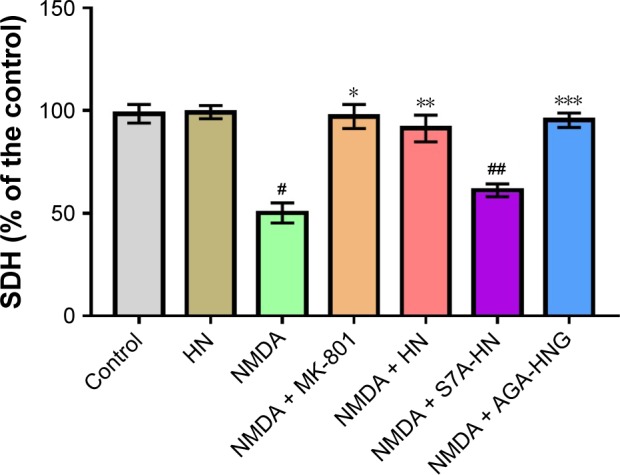Figure 4.

Effect of HN on NMDA-induced decrease of mitochondrial SDH activity.
Notes: Data are expressed as mean ± SD (n=5) and are the percentage of the mean of the control group (100%). Statistical significance was set at P<0.05. Data were analyzed by 1-way ANOVA followed by post hoc Tukey’s test for multiple comparisons. #Control group versus NMDA group, P=0.002; *NMDA group versus NMDA + MK-801 group, P=0.026; **NMDA group versus NMDA + HN group, P=0.000; ##control versus NMDA + S7A-HN, P=0.032; ***NMDA versus NMDA + AGA-HNG, P=0.001. NMDA: 100 μM/L; MK-801: 10 μM/L; HN, S7A-HN, and AGA-HNG: 1 μM/L each. NMDA is an excitotoxin that induces the overactivation of the NMDA receptor, causing excitotoxicity. MK-801 is a known uncompetitive antagonist of NMDA receptor, which could block the binding of NMDA.
Abbreviations: AGA-HNG, 100× more active form of HN; ANOVA, analysis of variance; HN, humanin; NMDA, N-methyl-D-aspartate; S7A-HN, inactive form of HN; SD, standard deviation; SDH, succinate dehydrogenase.
